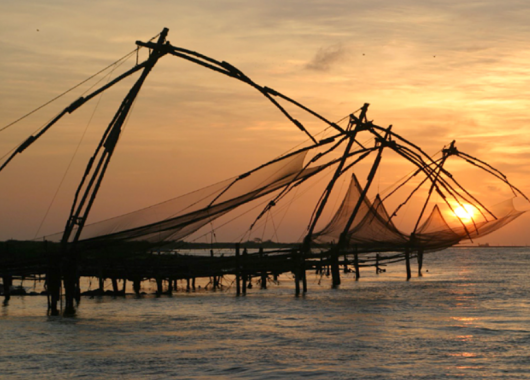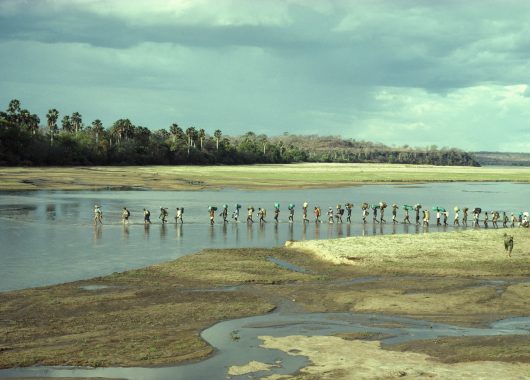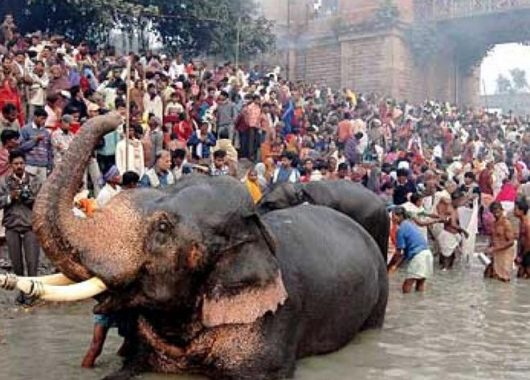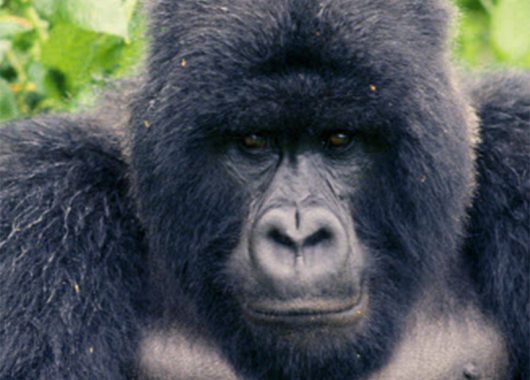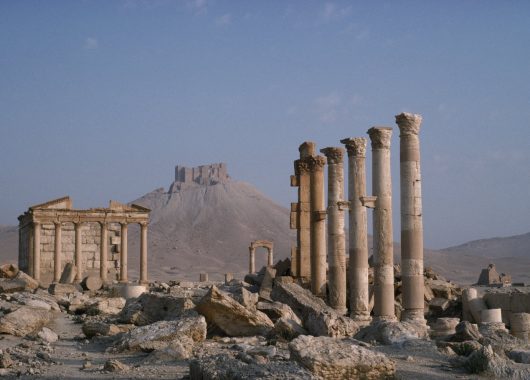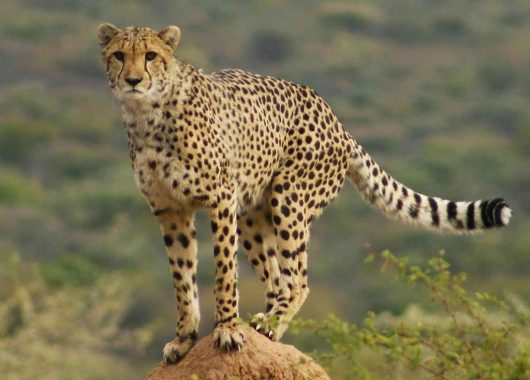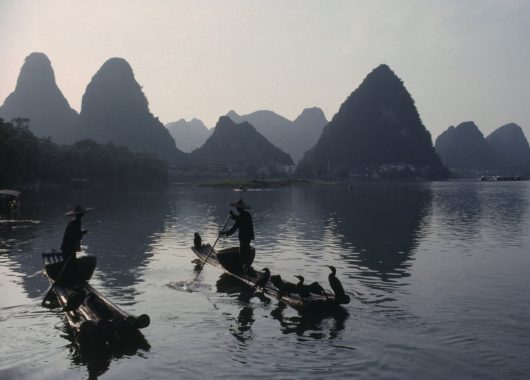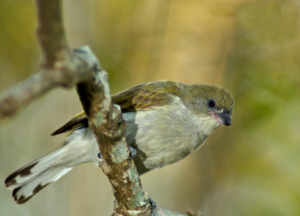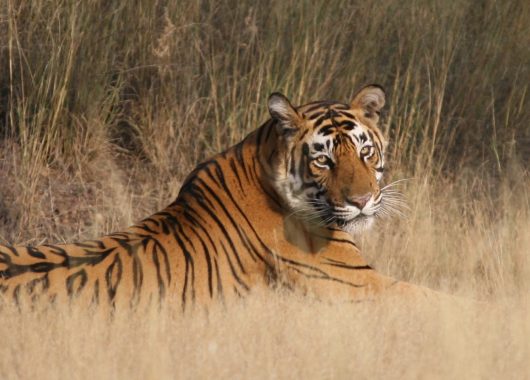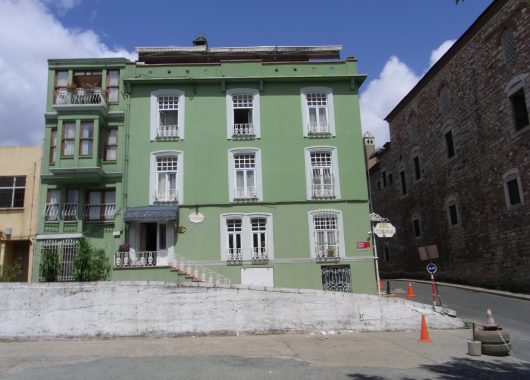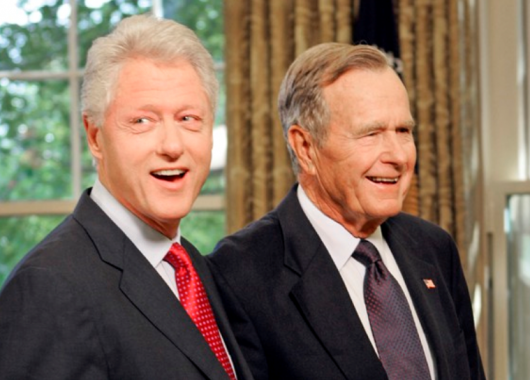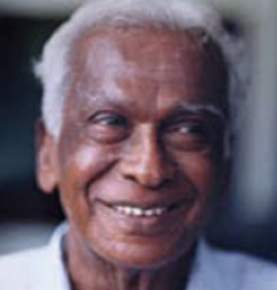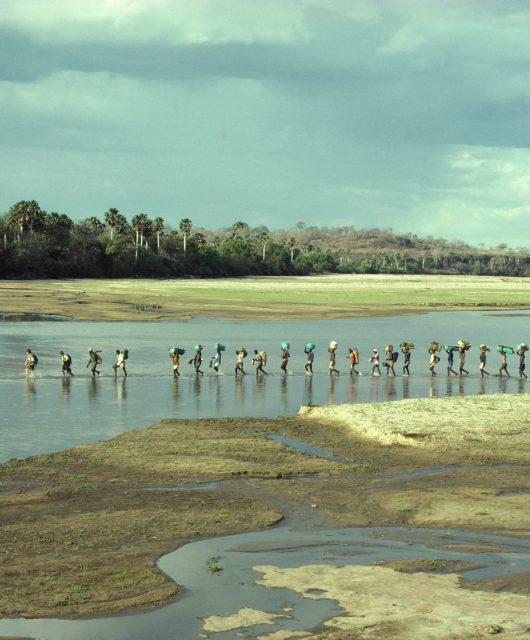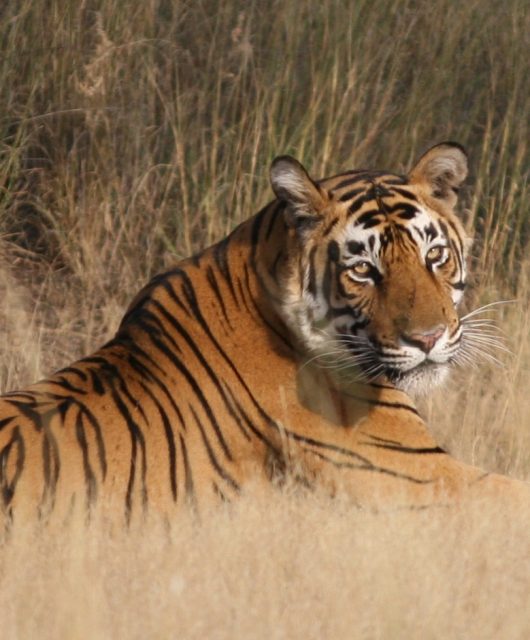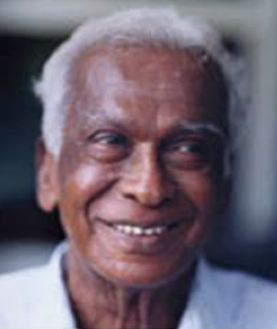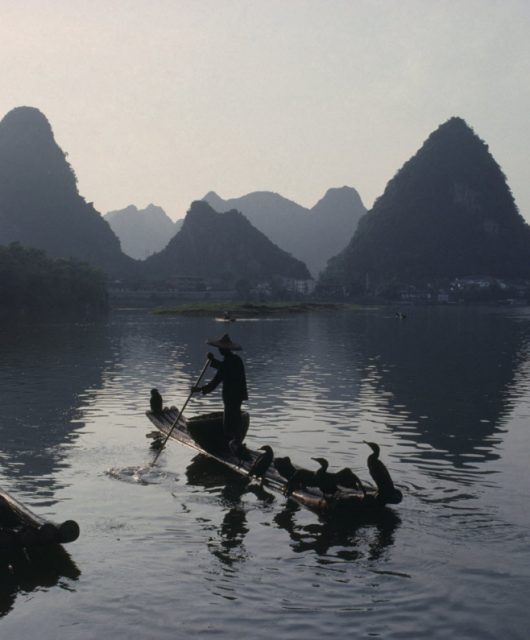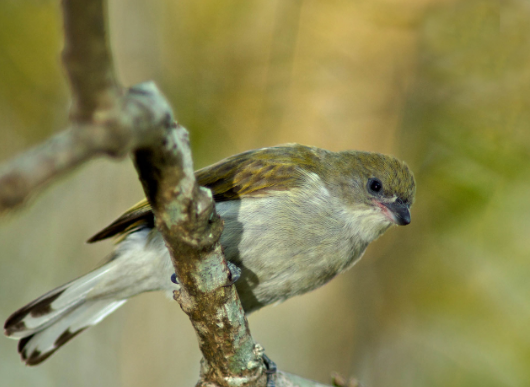Oman
This article was first published by Harpers & Queen, October 1995.
In the late 1960s there was student unrest throughout Europe, including at Oxford where the Clarendon Building was occupied by a group of activists. Among them I remember a bearded orator haranguing his audience about Oman, a remote country apparently ruled by a despotic regime that was actively supported by the British government. The enraged orator told us that its Sultan, Said bin Taimur, wouldn’t allow any type of modernisation, not even electricity or newspapers, and that no farmer had ever been allowed to own a tractor. When the Sultan – who lived six hundred miles away from the capital – wanted his views known, they were written on a piece of paper which would be pinned to one of the capital’s three wooden gates. These gates were closed after dark.
My immediate reaction to the firebrand’s speech was that I must at once visit this travellers’ paradise. Looking up Oman in my atlas, I found that it was a country three times the size of Ireland in the South East corner of the Arabian Peninsula. I applied for a visa, but it was of course refused. A quarter of a century later, the Omani government invited me as their guest.
Reading about the country, I discovered why the old Sultan had been so cautious. In 1932 he had inherited a fractious, mountainous, tribal country, from which his government managed to extract an income of only £50,000 a year; by 1967 this had increased to only £100,000 a year. Many of the traditional revenues (such as the illicit trade in African slaves) were drying up, and Oman no longer benefited from the prosperity of Zanzibar, which was ruled by another branch of the Omani royal family. With great difficulty, and some help from the British, the Sultan managed to balance the budget, but he remained obsessed about avoiding government debt, partly because debt means paying interest, which many Moslems consider to be forbidden.
By the end of the 1960s, the Sultan’s conservatism was indeed starting to look extreme; there were only two miles of metalled roads, and no schools; if someone wanted to buy any type of vehicle, they had to get signed permission from the Sultan himself. This was rarely granted. He may have preserved the country from the sex-and-shopping culture of the West, but this was no great benefit if you were a villager with appendicitis. In 1970 the Sultan was overthrown by a bloodless coup, and replaced by his son, the present ruler Sultan Qaboos.
Although the new Sultan’s father had been educated at Mayo College, India’s leading school for its royal families, Qaboos was sent to a small private school near Bury St Edmunds, after which he was a cadet at Sandhurst. He then spent more than a year in local government, partly at Warwick. When he took over Oman, he had little more than nominal power over many parts of the country. The sultans had tended to keep control of the coast, but the mountainous interior was in effect ruled by various Imams and tribal chiefs, who showed at most only notional loyalty to their monarch. With considerable help from the British, who still have strong connections with the Oman army, the Sultan successfully fought the final war that united his country.
Ever since his succession Qaboos has ruled as an autocratic monarch, but – despite the recent arrests – a comparatively benign one. He at once started a programme of modernisation: because almost no-one inside the country had received any education, he invited many Omani expatriates to return, as well as Zanzibari Omanis. In 1967 oil had started to flow and, although it has never been as bountiful as in other Gulf states, he was able to spend money on hospitals, schools, and roads. All these are now excellent, and the infrastructure works efficiently. It must be admitted, though, that most of the menial work is done by a vast army of immigrant labour, mostly Asian, who constitute nearly a quarter of the 2 million population.
The Sultan is fussy, expecting everything to function with military precision: I even saw a municipal refuse-van collecting rubbish in a remote mountain village, 25 miles down a dirt-track from the nearest metalled road. The colonial joke “Not so much the Middle East, more like the Muddle East”, does not apply to Oman.
I was invited because I’m a travel editor; however, until recently the government has given scant encouragement to tourism, and it still has the sense to remain ambivalent about whether to foster it. The potential is certainly there: the country has a wonderful landscape of bare jagged mountains, interspersed with brilliant green valleys; there are innumerable empty beaches, and potential access to superb dive sites. The people are friendly, courteous, and dignified. Mugging is unthinkable. Tourism, though, is in its infancy. Muscat does have one of the most magnificent hotels in the world, the Al Bustan Palace, but outside the capital there are few hotels of an international standard. Although there are few tourists, British visitors are frequent – some on business and some working with the army. All those I met have developed an affection for Oman and its people.
In the capital, Muscat, my government guide took me to see the Fort which, if it had been situated in many other countries, would already have been a well-trodden tourist site. When we arrived, I was greeted by two immaculate soldiers dressed in camouflage outfit and blue suede shoes. We ignored the eighty steps, and instead took a funicular to the first level, while the soldiers used walkie-talkies for giving or receiving instructions. After climbing further to the top, where I admired the view of old Muscat, I was led into a dark room. One of the soldiers opened the doors of an immense and ancient cupboard, revealing an air-conditioner which provided a noisy blast of cool air. Then a spotlight pierced the darkness, highlighting a heavy studded chest whose lid slowly opened to reveal a pile of curved silver daggers, while an American voice then narrated a eulogistic history of Oman. After the son-et-lumiere I signed the visitors’ book, noticing that I was the first foreign visitor for a month.
When I first heard about camel-racing at Suwayq, I presumed that, like the son-et-lumiere, it must have been specifically created as a tourist attraction. But, having been assured that this was not the case, I went to Suwayk and found that, although the racing is quite a recent phenomenon, it was entirely indigenous.
Heide Beal, an enterprising German who fell in love with Oman and now organises camping tours, had arranged that we should pitch a camp on the eve of the races. After settling I asked to visit some Bedouin encampments, but our local guide said that this was out of the question, as the camel owners are fiercely secretive about feeding their animals, and therefore pitch their tents at a great distance from each other. They believe that the composition of the camels’ diet is the most crucial factor in their success. The secretiveness of the Bedouin didn’t diminish their conviviality. The local patron of the races, Said Hamaid al Wahaibi, brought a slaughtered sheep for our dinner, and he was accompanied by six red-turbaned companions, all clasping thin camel sticks, who greeted our Bedouin guide with a gentle nose-to-nose nudge. Said told me about his camels, while we squatted around our paraffin lamps,
The diet of Said’s camels includes eggs, small dates, cows’ milk, ghee, and honey, along with various other ingredients which I have promised not to divulge. This food costs him £5,000 a month, which at the moment he can afford because in recent years the value of a successful racing camel has soared to astounding levels – mostly as a result of competition between the ruling families of Dubai and Abu Dhabi. Last year Said managed to sell one camel for £240,000 and another for £320,000. He told me that he hoped that his best camel would win the Sultan’s Birthday Race at Nizwa, in which case he would be able to sell the winner for an even higher price. Said’s wealth is relatively recent: he began his career by gathering camel dung, which he sold by the bucket as fertiliser.
Next morning we rose while it was still dark, but soon a distant range of mountains started to glow in the clear pink morning light, and from every direction came the protesting groans of camels. During breakfast a succession of unknown Bedouin arrived, and without the slightest by-your-leave sat at our table and tucked into our rapidly diminishing supply of toast and eggs. I had become accustomed to receiving the wonderful hospitality of Bedouin, and had somehow managed to forget that hospitality should work both ways.
The camel race-track was four kilometres long, and bordered by tall sand-banks, constructed so that the camels aren’t able to veer off the course. The jockeys, tiny unhappy-looking boys, controlled their camels with the greatest difficulty, and their pre-race misery was sometimes prolonged by vociferous rows between owners about whether certain camels were in the qualifying age-group for a particular event. Peace was restored after the owners were asked to swear on the Koran. The more sedate spectators, dressed in white robes, stood in rows at the top of the sandbanks. Many of the older ones were wearing curved and ornate silver daggers, which are often the Omani equivalent to a tie, signifying an element of formality. But most spectators prefer the excitement of following the race in their car. Once the race had begun, we joined a scrummage of Toyota pick-up trucks rampaging alongside the camels, hooting, swerving, and even climbing the sandbank, while drivers and passengers leant out of windows, waving their camel sticks while shrieking at the jockeys.
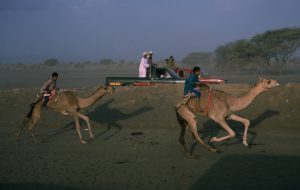
After the races, Said invited our party to his house. Although he must be a multi-millionaire, his home is a simple one-storey building, the only hint of grandeur being some simple crenulation. It is often said that Bedouin culture has been destroyed, and superficially this may be true. But in some ways Said is still enjoying the life of his ancestors. Like many other Bedouin, he would rather be on the move than settle, although his moving is now done by pick-up truck rather than camel. However he still loves and respects his camels, and when I asked him if he castrates the males (as they do, for instance, in Kenya) he replied, “I wouldn’t do that to a man, and it would be an offence against God to do it to a camel”. None of his sons want to go to school; they would prefer to keep camels.
None of Said’s nomadic ancestors would have been encumbered by possessions: they would have obstructed their ability to move quickly. Said’s main room remains true to this tradition, being entirely devoid of furniture except carpets and cushions. A salver of incense was passed from guest to guest, so that they could perfume their beards. An immense round tray piled with orange and melon segments was brought to refresh us, followed by a delicately spiced vegetable curry. Said asked me if I knew of an Englishman who could create a garden for him.
The following day I started on the 600-mile journey from Muscat, the capital, to Salalah. Each end of the nation is mountainous, but in the middle lies an extensive region of desert, where I stopped for three days to look at a project for re-introducing the Arabian Wild Oryx.
In 1972 a motorised hunting-party slaughtered the last herd of these beautiful animals, which thus became extinct in the wild. In 1980 some captive oryx were brought from stock that had been preserved in Arizona, and an intensive project began, which has gradually increased the numbers up to more than 230. These captive-born animals have had to re-learn the habits of the wild, for instance how to form themselves into hierarchies, and how to smell the wind so that they can judge where it has rained. So far this is one of the world’s few successful attempts to reintroduce zoo-bred animals into the wild.
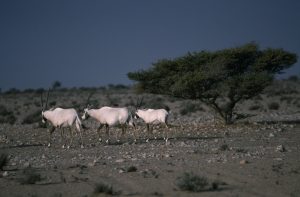
The herds are guarded by 21 rangers from the local Al Harasis tribe, who previously would have hunted them. Not a single oryx has yet been poached. These tribesmen are delighted to be able to continue using their astonishing skills at tracking, and to be able to go on living in their ancestral desert. But until recently their life was extraordinarily harsh: there was no drinking water whatsoever in this area, and their fluids had to come almost entirely from the milk of camels or goats. If there was any prospect of dew, they hung out their rugs which, when squeezed, sometimes released enough water for a cup of coffee.
On my second morning at the project I was driven to meet three rangers guarding a herd of oryx. We sat round the inevitable tray of dates and coffee presented at every Omani meeting. The three rangers then muttered among themselves, debating who should ask for `The News’; it is always the most senior person present who asks this question. On being asked for the news, the answer is always “There is no news” – even if Elvis Presley has just been discovered on the moon. The real news will trickle out later, after the formalities.
During our talk I questioned one of the rangers, Loti bin Said bin Musabi Al Harsusi, about an astonishing hunting story. He had once been desperate for a job in the oryx project but had frequently been told that none was available. He knew, however, that the project had repeatedly failed to capture a live female ibex, so he decided to catch one by himself. On the escarpment where the ibex live he stalked one from boulder to boulder until he lunged and seized it by a back leg. The hefty ibex hurled itself in the air and then dragged him all over the rocks, tearing his clothes to shreds. After half an hour of struggle, Loti managed to unwind his turban and pinion the animal’s front legs. Eventually he drove his Toyota pick-up to the project’s headquarters and presented the astonished British staff with a live female ibex. He was given a job at once, and has proved to be the most remarkable ranger of all.
The expensive oryx project would not have happened without the backing of the Sultan, who must be one of the world’s most ecologically-minded heads of state. In 1976 he banned the hunting of many larger animals; in 1993 he issued a law banning the hunting or live-capture of any animal in the country. Spear fishing and coral collecting are also forbidden. No tree can be cut down without a specific licence. In fact every aspect of Oman is influenced by the character of its omnipotent sovereign. The Sultan is a connoisseur of western classical music, and therefore every day on television the Royal Oman Symphony Orchestra plays before the news; there are also many splendid musical bands, including a Royal Guard band, which is mounted on horses, and a Royal Oman Police band, which plays bagpipes while mounted on camels. Visiting Heads of State are likely to be serenaded at the airport by excerpts from Wagner. Yet the Sultan does not believe that modernisation need be synonymous with westernisation. He has, for instance, decreed that government officials must wear the traditional dishdash, for he believes that, if the officials wear suits, there will be too great a cultural gap between them and the villagers who need to visit government offices.
The expatriates in Oman admire the Sultan, and consequently are given to anxious discussion about the `succession problem’: the Sultan is 54, and shows no sign of producing an heir. However, this needn’t be much of a worry. In many traditional monarchies, including most oriental ones, there has rarely been a custom of primogeniture: it is important that the strongest person should take over, and he eventually emerges from among the members of the ruling family.
Meanwhile, as long as the fastidious Sultan rules, the appearance of Oman is enviably well protected. There is no litter anywhere; I did once see an empty crisp packet, but this surprised me so much that the event is for ever etched in my memory. Advertising hoardings are forbidden; laundry may not be hung out of windows; building-sites have to be hidden behind tall fences; owners of dirty cars are punished with a stiff fine; houses must be painted in the traditional white or ochre colours; many ugly buildings dating from the early oil-era have been compulsorily demolished; and air-conditioners must be covered by wooden slats. Satellite dishes are also supposed to be camouflaged by elegant wooden casings, but this law is widely ignored, mostly because the cost of building the casing is even more expensive than buying the satellite dish. Nevertheless the money will probably have to be spent eventually, for as an Omani driver said to me “If His Majesty is driving along the road, and takes a dim view of our satellite dishes, of course we shall immediately have to cover them”.
![]()
Articles by John Hatt
Other Articles
![]()
![]()

